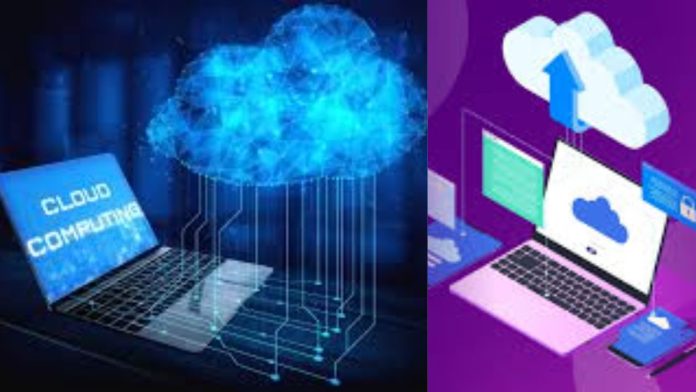Cloud computing has transformed the way businesses, developers, and everyday users consume technology. Instead of buying and maintaining expensive on-premises hardware, you can now access computing power, storage, databases, and other services on demand over the internet—only paying for what you use.
Whether you’re a startup looking to scale fast, an enterprise reducing IT overhead, or a developer building the next big thing, cloud computing offers unmatched flexibility, cost efficiency, and global reach.
In this guide, you’ll learn:
- What cloud computing is
- Benefits of cloud computing
- Key cloud computing service models (IaaS, PaaS, SaaS)
- Types of cloud deployments
- Common use cases
- Real-world examples
- How cloud computing is driving innovation
What Is Cloud Computing?
Cloud computing is the delivery of computing services over the internet—including servers, storage, databases, networking, software, analytics, and AI—on a pay-as-you-go basis. Leading providers like Amazon Web Services (AWS), Microsoft Azure, and Google Cloud Platform (GCP) allow you to spin up resources in minutes and scale globally with just a few clicks.
Quick Definition: Cloud computing lets you access IT resources over the internet instead of managing them on physical hardware.
Why Is Cloud Computing Important?
Cloud computing solves critical pain points for modern businesses:
- No upfront infrastructure cost
- Fast scalability
- Global access
- Automated updates and security patches
- Faster time-to-market for products and features
Key Benefits of Cloud Computing
1. Agility and Speed
Access a broad range of tools and technologies to build, test, and deploy applications faster. Launch new ideas in minutes instead of months.
2. Scalability and Elasticity
Scale resources up or down based on real-time demand, eliminating the need for overprovisioning.
3. Cost Efficiency
Shift from capital expenditure (CapEx) to operational expenditure (OpEx). Only pay for what you use, and benefit from the cloud provider’s economies of scale.
4. Global Reach
Deploy your app in multiple regions worldwide to minimize latency and maximize performance for users everywhere.
5. Reliability and Security
Major cloud providers offer high availability, automated backups, disaster recovery, and built-in security compliance.
Cloud Computing Service Models
Cloud computing comes in three primary models, each offering different levels of control and flexibility:
1. Infrastructure as a Service (IaaS)
- Access to virtual machines, storage, networks, and operating systems.
- Maximum control over IT resources.
- Best for IT admins and developers managing custom environments.
Example: Amazon EC2, Google Compute Engine, Microsoft Azure VMs.
2. Platform as a Service (PaaS)
- No need to manage hardware or OS.
- Focus on building and deploying applications.
- Ideal for developers.
Example: AWS Elastic Beanstalk, Google App Engine, Azure App Service.
3. Software as a Service (SaaS)
- Fully functional applications hosted in the cloud.
- Accessed via browsers or apps.
- Ideal for end-users.
Example: Gmail, Microsoft 365, Salesforce, Zoom.
Types of Cloud Deployment Models
1. Public Cloud
- Resources are shared over the internet.
- Managed by third-party providers like AWS or Azure.
- Cost-effective and scalable.
2. Private Cloud
- Dedicated infrastructure for one organization.
- Greater control and security.
- Often used by financial institutions and government agencies.
3. Hybrid Cloud
- Combination of public and private clouds.
- Enables data portability, backup flexibility, and disaster recovery.
4. Multicloud
- Use of multiple cloud providers to avoid vendor lock-in and enhance performance.
What Are Cloud Services?
Cloud services are fully managed offerings that include:
- Compute: Virtual machines, containers, auto-scaling
- Storage: File, block, and object storage
- Databases: SQL, NoSQL, managed DBs
- AI/ML: Image recognition, NLP, chatbots
- Networking: CDN, VPN, load balancing
- Security: Identity access management, encryption, compliance
- Migration: Tools to move apps and data to the cloud
Real-World Use Cases of Cloud Computing
- Healthcare: AI-powered diagnostics and personalized treatments
- Finance: Real-time fraud detection and risk management
- Gaming: Real-time multiplayer gameplay for millions (e.g., Epic Games)
- Streaming: Netflix delivering content to 200M+ users globally
- Retail: Personalized recommendations and inventory optimization
- Education: Scalable LMS platforms and AI tutors
Who Uses Cloud Computing?
- Startups: Low barrier to entry for innovation
- Enterprises: Global infrastructure with high availability
- Governments: Secure data centers with compliance
- Developers: Tools to build, test, and deploy apps fast
- Students: Affordable access to world-class tech stack
Getting Started with Cloud Computing
- Choose a provider – AWS, Azure, or GCP are the most popular.
- Select a service model – IaaS, PaaS, or SaaS based on your goals.
- Start small – Launch a simple virtual server or storage bucket.
- Scale as needed – Add resources on demand.
- Optimize for cost – Use usage monitoring and autoscaling tools.
Final Thoughts
Cloud computing is no longer just an option—it’s the foundation of modern digital transformation. It enables organizations of all sizes to innovate faster, reduce costs, and scale efficiently. Whether you’re launching a new app, managing large datasets, or adopting AI, the cloud provides the tools you need to succeed in a digital-first world.
Ready to harness the power of cloud computing? Start with a free tier on AWS or Azure and begin building for the future—today.

